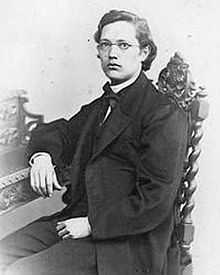Gustav Roch

Gustav Roch (December 9, 1839 – November 21, 1866) was a German mathematician who made significant contributions to the theory of Riemann surfaces in a career that was prematurely curtailed at the age of 26.
Biography
Born in Leipzig, Roch attended the Polytechnic Institute (Technische Bildungsanstalt) in Dresden, initially focusing on chemistry, encouraged by his father. However the mathematician Oscar Schlömilch identified his exceptional talents and guided him towards a mathematical career. Combining studies at the Polytechnic Institute with private studies at another institute enabled Roch to be already publishing original research on the mathematical theory of electromagnetism from 1859.
Later in 1859, Roch entered the University of Leipzig, coming under the influence of Möbius, and continuing his work on electromagnetism. In 1861, Roch went to work at the University of Göttingen, studying under Weber, but also attending lectures by Bernhard Riemann. After three terms in Göttingen, Roch went to the University of Berlin, where he met Kronecker, Weierstrass and others. In 1862 he was awarded a master's degree from Leipzig and later a doctorate for his work on electromagnetism.
From this point his work took a more mathematical slant. In the following year he published the paper containing the result for which he is famous to this day, the Riemann–Roch theorem (given its name by Max Noether), which related the topological genus of a Riemann surface to purely algebraic properties.
Only two years later, Roch's health was shattered due to a tuberculosis infection. He moved to Venice in the hope that warmer weather would aid his recovery, but he died there a month later.
References
- Roch, Gustav (1865), "Ueber die Anzahl der willkurlichen Constanten in algebraischen Functionen", Journal für die reine und angewandte Mathematik 64: 372–376, doi:10.1515/crll.1865.64.372
External links
- O'Connor, John J.; Robertson, Edmund F., "Gustav Roch", MacTutor History of Mathematics archive, University of St Andrews.
- Biography at the University of Halle-Wittenburg
- Gustav Roch at the Mathematics Genealogy Project
|